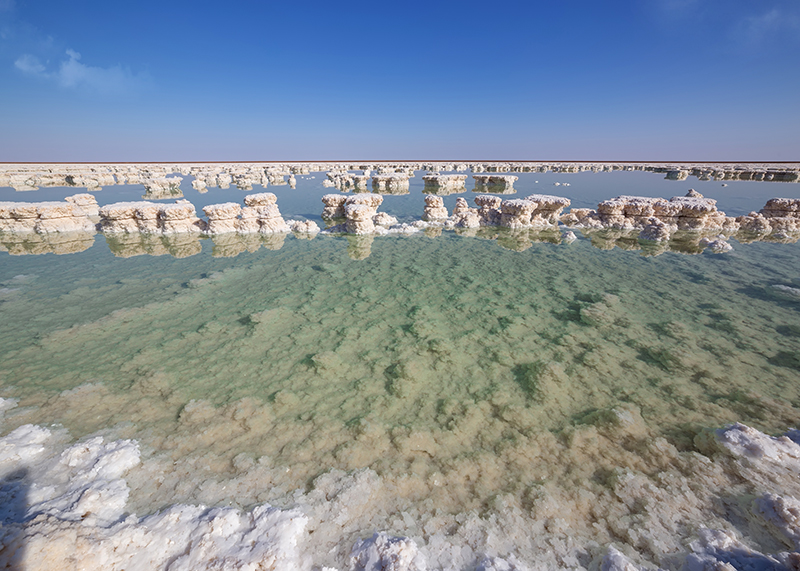Carnalite production
Swimming Pools Carnalitizing pools have only one valve. These pools are either used discontinuously or used continuously by the pump. In carnalite pools, a salt bed about 5 cm high is created by evaporation of brines to allow carnalite to be collected by heavy machinery.
The pool dehydration program is developed annually to meet the complex goals and tonnage requirements of the potash processing plant. The amount of brine required initially is also a function of the amount of carnitine required by the plant. Due to the high solubility of carnalite in water, one of the most important issues in formulating a pool dehydration schedule is the time of carnalite collection prior to the start of the rainy season. And the amount of rainfall is adjusted. While sludge pumping from the Playa Mine, the evaporation level and height of the sludge in each pool are managed in such a way that in addition to collecting carnalite before the start of the rainy season, the highest carnalite thickness is obtained in the least possible area. On the other hand, as the collection is carried out by machines and impurities (salts of the pool bed) are allowed to enter the carnalite, the greater the thickness of the carnalite adhered to the pool, the higher the quality of the produced carnalite.
It should be noted that in the process of dewatering and rotation of brines in a continuous manner, the volume (discharge) of pumping will vary according to the evaporation rate, so that in summer the highest volume of pumping will be minimized by decreasing evaporation in autumn and winter. Receipts and pools act as a saltwater storage tank.
In the solar evaporation pools of the Potash Khorobiabank Complex, the dewatering and circulation processes of the brines are so high that even with heavy winds in the area, the pools with a height of over one meter are not possible.
Salts that are evaporated in salt pools by about 5% salt and saturated with potassium chloride, as concentrated salts, gravely enter carnitine pools. The density of the brine inlet to the carnalite pools is 1. 350 g / cm3 and is ready to precipitate carnalite. Carnalite is a double salt of potassium chloride and magnesium chloride whose chemical formula is KMgCl3.6H2O. Although most of the salts are salted in the salt pools, salt evaporation continues in the carnitine pools. Typically, 5% by weight of carnalite is produced by salt impurities, which are separated in the flotation process at the potash processing plant. As the evaporation continues to increase, the brine density is reduced to 1.400 g / cm3, and the remaining brine is discharged into the pool as the effluent of the solar evaporated pools. These effluents are saturated with calcium chloride and magnesium chloride. Based on the use of these two compounds, pool wastewater is marketed as a by-product of pools to prevent dust spreading and stabilizing dirt roads.
After removing residual brines on the carnalite (final brines) to collect and transport the carnalite from the pool to the plant by machinery, the pool needs to be well drained and in addition to the brines in the carnalite layer to be removed from the salt bed of the pool. This process is done using the drainage and pumping network that was created before dewatering in the pool. In addition, manpower is used to drain the drainage channels (over a month). After the drainage is finished, the carnalite, which is about 5 cm in height, is deposited by a bulldozer in the pool and then loaded onto the truck by the loader and shipped to the potash processing plant.


